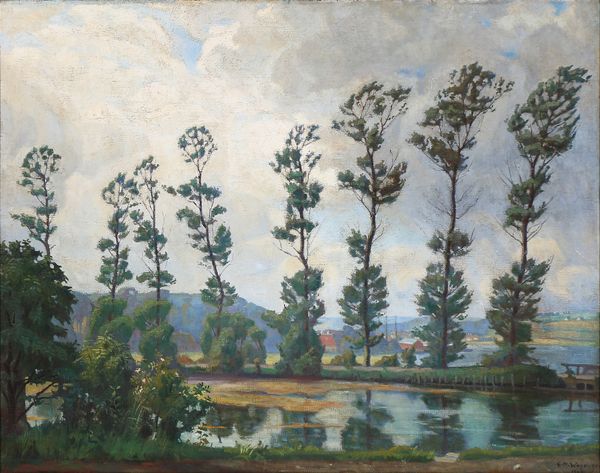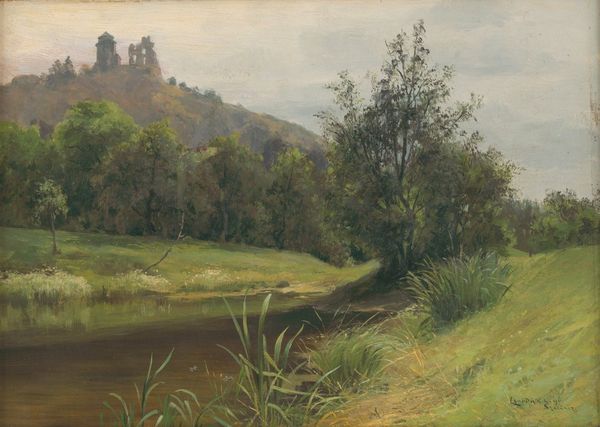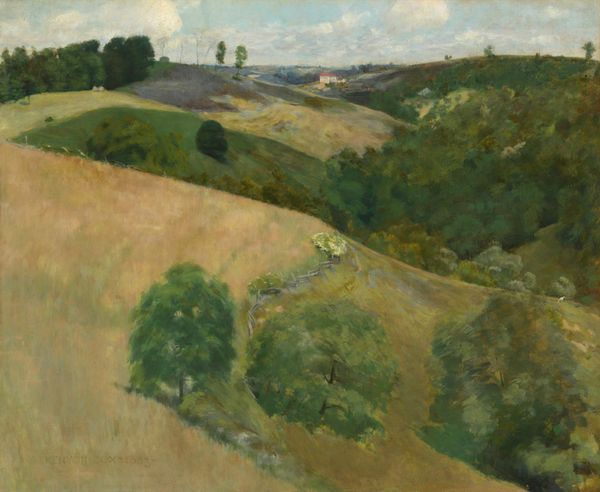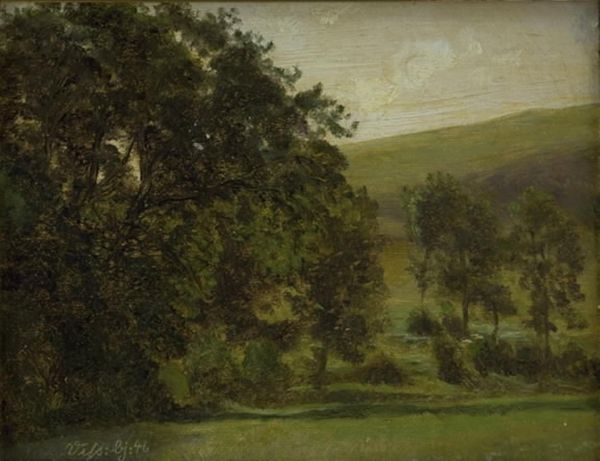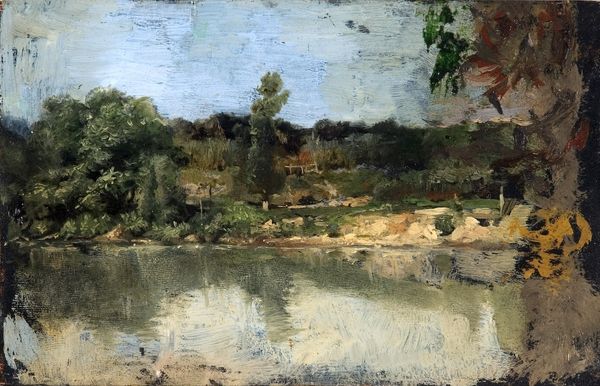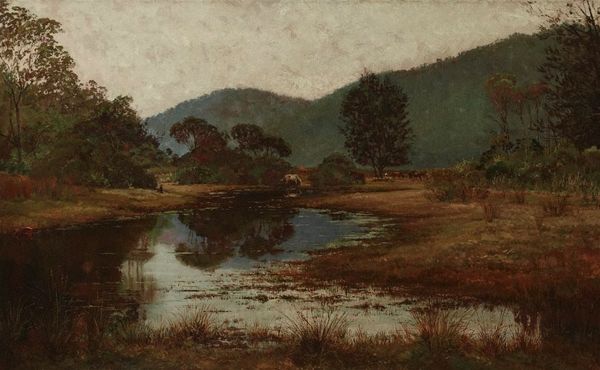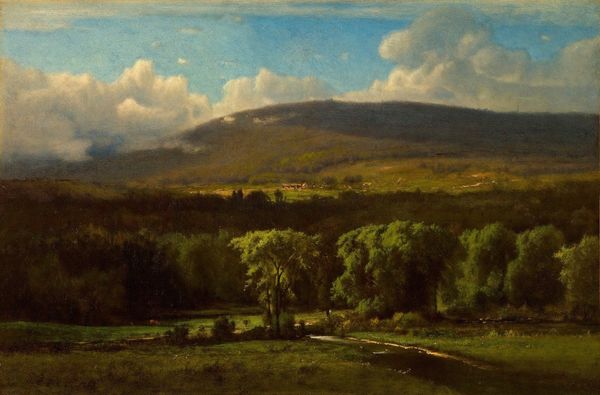
Dimensions: 33 x 45.7 cm
Copyright: Public domain
Editor: Here we have Albert Bierstadt's "Hanabach, Westphalia, Germany," created in 1856 using oil paint, and seemingly en plein-air. I am struck by the strong diagonal created by the hillside; it really dominates the composition. What do you see as most important here? Curator: The composition relies heavily on contrasting textures and the interplay between light and shadow. Observe how the artist juxtaposes the rough texture of the foliage against the smoother surface of the water. Consider too, how the light creates subtle gradations on the hillside, emphasizing its form. Editor: So, it's more about how it’s painted than where it’s painted. It almost feels like I should ignore the landscape and focus on the...paint-scape? Curator: Precisely. Forget for a moment that this is a landscape. Instead, analyze it as a purely formal arrangement of shapes, colors, and textures. Consider the rhythm created by the repetition of vertical tree trunks and the horizontal band of the water. Editor: That makes sense. I see now how the curve of the path and the reflections in the water almost mimic each other. They aren’t representing something beyond the picture itself. Curator: Indeed, the artist utilizes these elements not as representations of reality, but as formal devices that contribute to the overall aesthetic effect. The romantic undertones serve more to enable exploration of texture. What feeling do the visual structures invoke now? Editor: Now that you mention it, it creates this serene kind of stability by using very unstable representational figures. This tension makes the piece so interesting. Curator: The painting offers a rigorous interplay of artistic elements divorced from easy sentiments. A rewarding piece to carefully consider, don’t you agree?
Comments
No comments
Be the first to comment and join the conversation on the ultimate creative platform.

